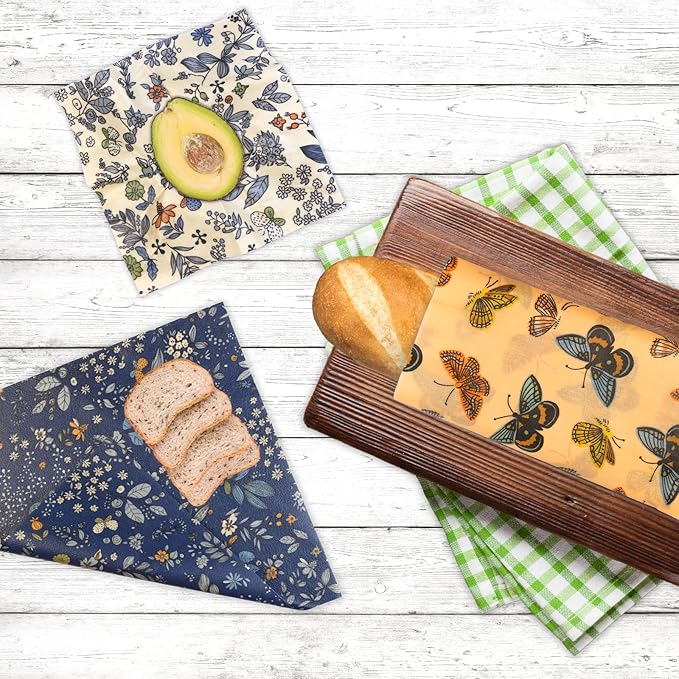Create an Eco-Friendly Home on a Budget
Did you know the average American home produces over 1,000 pounds of waste yearly?
With climate change and rising energy costs, more people are looking for ways to live sustainably without breaking the bank.
The good news…
Going green doesn’t have to be expensive.
Small, budget-friendly changes can significantly reduce your carbon footprint, lower utility bills, and create a healthier living space.
In honor of Earth Day, let’s explore practical, affordable ways to make our homes more eco-friendly, one step at a time.
1. Why an Eco-Friendly Home Matters (Even on a Budget)
Sustainable living isn’t just for those with deep pockets. By making mindful choices, you can:
Save money on energy, water, and waste costs.
Reduce pollution and conserve natural resources.
Improve indoor air quality by avoiding harsh chemicals.
Every small action adds up—especially when millions of households adopt greener habits.
2. Energy Efficiency: Lower Bills, Lower Impact
Heating, cooling, and electricity make up many home expenses. Here’s how to cut costs while reducing energy use:
✔ Switch to LED Bulbs
LED bulbs are 75% more efficient than incandescent bulbs.
Last 10-25 times longer, saving replacement costs.
✔ Unplug Electronics & Use Smart Power Strips
“Phantom energy” (devices on standby) adds up to $100/year in wasted electricity.
Smart power strips cut power when devices aren’t in use.
✔ Adjust Thermostat Settings
Lower the thermostat by 7–10°F for 8 hours/day (saves up to 10% annually).
Use fans, open windows, and layer clothing to reduce HVAC reliance.
🤑 Budget Bonus: Many utility companies offer free energy audits to identify savings.
3. Reduce, Reuse, Recycle: Waste-Less Living
The 3 R’s aren’t just for schools—they’re key to a low-waste, budget-friendly home.
✔ Ditch Single-Use Plastics
Swap plastic wrap for beeswax wraps or silicone lids.
Use glass jars for bulk shopping (cheaper than packaged goods).
Carry a reusable water bottle & shopping bag (saves $5–$10 per grocery trip).
✔ Upcycle & Repurpose Furniture
Thrift stores, Facebook Marketplace, and garage sales offer cheap, unique finds.
Sand and repaint old furniture instead of buying new.
✔ Start a Compost Bin
30% of household waste is compostable (food scraps, paper, yard waste).
Compost bins can be made from plastic tubs or wooden pallets.
Reduces trash bills and creates free fertilizer for gardens.
4. Water Conservation: Save Money & Resources
The average household wastes 10,000 gallons of water yearly from leaks alone. Here’s how to cut back:
✔ Install Low-Flow Showerheads & Faucets
Costs under $20 and reduces water use by 40–60%.
Look for high-performance products.
✔ Fix Leaks Promptly
A dripping faucet wastes 3,000+ gallons/year.
Most leaks can be fixed with a $5 washer or wrench.
✔ Collect Rainwater for Plants
Use barrels or buckets to catch rainwater (free irrigation).
Great for gardens, houseplants, and even car washing.
🤑 Budget Bonus: Some cities offer rebates for water-saving upgrades.
5. Sustainable Shopping: Eco-Friendly Choices That Save Money
Green products often seem pricier, but smart shopping makes sustainability affordable.
✔ Buy Secondhand & Thrift
Fast fashion is a major polluter—opt for thrifted clothes.
Check local buy-nothing groups for free furniture & decor.
✔ Choose Non-Toxic Cleaning Products
DIY cleaners with vinegar, baking soda, and lemon cost pennies per use.
Avoid chemical-laden sprays (better for health & environment).
✔ Invest in Reusable Instead of Disposable
Use cloth napkins instead of paper towels.
Use silicone food wraps instead of plastic wrap.
Safety razors instead of disposable razors (saves $200+/year).
6. Small Changes, Big Impact: Easy Daily Habits
Going green doesn’t always require big investments or lifestyle overhauls.
Some of the most powerful eco-friendly habits are simple, free, and easy to maintain.
These small daily actions add up over time, reducing waste, conserving resources, and saving money.
Here are 9 effortless habits to make your home more sustainable, starting today:
✔ Air-Dry Clothes Instead of Using the Dryer
- Dryers are one of the biggest energy hogs in a home, costing $100+ per year to run.
- Hang clothes on a drying rack or clothesline (even indoors!).
✅ Benefits:
- Saves energy & money.
- Extends clothing’s lifespan (less wear and tear).
- Reduces microfiber pollution from synthetic fabrics.
✔ Grow Your Own Herbs & Veggies (Even in Small Spaces)
- No backyard? No problem! Many herbs and vegetables thrive in pots, on windowsills, or balcony gardens.
✅ Benefits:
- Saves $5–$10 per week on grocery-store herbs.
- Reduces plastic packaging waste.
- Ensures pesticide-free, fresh produce.
✔ Use Natural Light During the Day
- Open curtains and rely on sunlight instead of artificial lighting.
✅ Benefits:
- Lowers electricity bills.
- Boosts mood and productivity (natural light = better sleep and focus).
✔ Meal Prep & Reduce Food Waste
- The average family wastes $1,500+ per year on uneaten food.
✅ Simple fixes:
- Store food properly (use airtight containers, learn fridge organization hacks).
- Repurpose leftovers (stale bread → croutons, veggie scraps → broth).
- Freeze extras before they spoil.
✅ Benefits:
- Saves money.
- Reduces methane emissions from landfills.
✔ Turn Off the Tap While Brushing or Washing Dishes
- A running tap wastes 4+ gallons per minute.
✅ Fix: Turn off the water while scrubbing dishes, brushing your teeth, or shaving.
✅ Bonus: Install a low-flow faucet aerator for long-term savings.
✔ Use Both Sides of Paper (Or Go Digital)
- If you must print, use both sides of the paper.
- Switch to digital notes, receipts, and bills when possible.
✅ Benefits:
- Saves money on paper and ink.
- Reduces deforestation and landfill waste.
✔ Donate or Sell Unused Items Instead of Trashing Them
Before tossing old clothes, furniture, or electronics:
- Sell on Facebook Marketplace, Poshmark, or eBay.
- Donate to thrift stores, shelters, or Buy Nothing groups.
✅ Benefits:
- Keeps usable items out of landfills.
- Earns extra cash or tax deductions.
✔ Switch to Reusable Containers for Leftovers & Lunches
Ditch plastic wrap and single-use bags for:
- Glass or stainless-steel containers.
- Beeswax wraps or silicone lids.
✅ Benefits:
- Saves $50+ per year on disposable wraps.
- Reduces plastic pollution.
✔ Unplug Chargers & Electronics When Not in Use
- Even when turned off, devices in standby mode suck energy.
✅ Fix:
- Unplug chargers, TVs, and small appliances when not in use.
- Use a smart power strip to cut phantom energy automatically.
Small Steps Lead to Big Change
You don’t need to be perfect, just consistent.
Start with one or two habits, and gradually add more.
Over time, these small changes will:
✅ Lower your bills.
✅ Reduce your environmental impact.
✅ Create a healthier home.
✨ Which habit will you try first? Share your eco-friendly journey in the comments!
Sources:
LED Bulb Savings:
U.S. Department of Energy. “LED Lighting.” energy.gov
https://www.energy.gov/energysaver/led-lighting
Phantom Energy Costs:
Lawrence Berkeley National Laboratory. “Standby Power Summary.” standby.lbl.gov
https://standby.lbl.gov/summary-table.html
Water Waste from Leaks:
EPA. “Statistics and Facts.” epa.gov
https://www.epa.gov/watersense/statistics-and-facts
Low-Flow Showerheads:
WaterSense Program. epa.gov/watersense
https://www.epa.gov/watersense
Food Waste Statistics:
USDA. “Food Waste FAQs.” usda.gov
https://www.usda.gov/foodwaste/faqs
Composting Benefits:
EPA. “Composting At Home.” epa.gov
https://www.epa.gov/recycle/composting-home
Household Waste Statistics:
EPA. “National Overview: Facts and Figures on Materials, Wastes and Recycling.” epa.gov
https://www.epa.gov/facts-and-figures-about-materials-waste-and-recycling/national-overview-facts-and-figures-materials
Energy Audit Information:
U.S. Department of Energy. “Home Energy Audits.” energy.gov
https://www.energy.gov/energysaver/home-energy-audits


